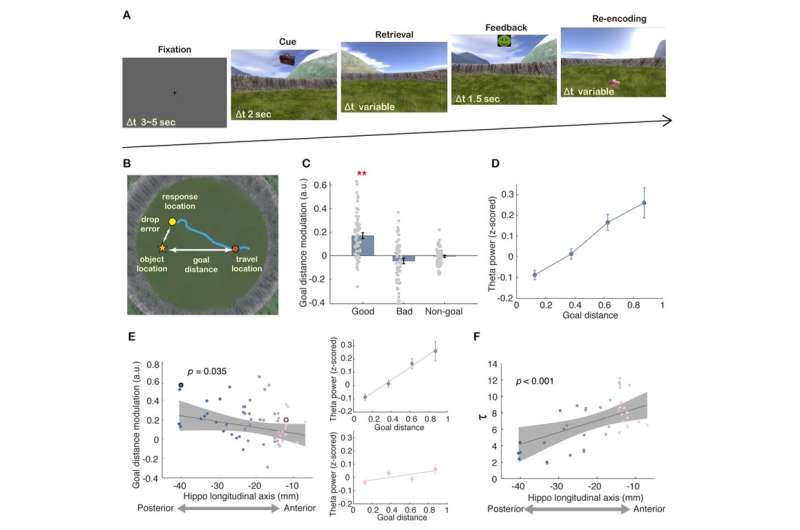This article has been reviewed according to Science X's editorial process and policies. Editors have highlighted the following attributes while ensuring the content's credibility:
fact-checked
peer-reviewed publication
trusted source
proofread
Human hippocampus theta oscillations code goal distance during spatial navigation

A research team led by Dr. Wang Liang from the Institute of Psychology of the Chinese Academy of Sciences has found that right hippocampal theta power hierarchically encodes the distance between the current position and a goal destination.
The study was published online on May 5 in Current Biology.
Successful navigation to a goal is crucial for animals in nature as well as for humans in modern life. Computational models show that goal-directed navigation computes the Euclidean distance to the goal. Multi-scale representation of goal distance is extremely efficient and less susceptible to interference from background noise than single-scale coding. However, the neural signatures underlying multi-scale goal coding remain poorly understood, particularly in the human brain.
By examining intracranial electroencephalography recordings from refractory epilepsy patients while performing a virtual spatial navigation task, the researchers found that high theta power (6–9 Hz) of the right hippocampus was significantly modulated by goal distance and decreased as participants approached the goal.
According to the researchers, this goal distance modulation showed gradual changes along the hippocampal longitudinal axis, with posterior hippocampal theta power becoming more tightly coupled to the goal distance.
Cognitive processing characteristics are eventually determined by the temporal hierarchy of brain regions. The researchers also found that the neural timescales showed a gradual increase from the posterior to the anterior hippocampus.
"This is the first study to investigate the electrophysiological neural signatures of goal distance in humans," said Dr. Wang, corresponding author of the study.
The results provide empirical evidence for a multi-scale goal distance representation in the human hippocampus, and link the hippocampal processing of spatial information to its intrinsic temporal dynamics.
More information: Liang Wang, Multi-scale goal distance representations in human hippocampus during virtual spatial navigation, Current Biology (2023). DOI: 10.1016/j.cub.2023.04.033. www.cell.com/current-biology/f … 0960-9822(23)00481-5




















